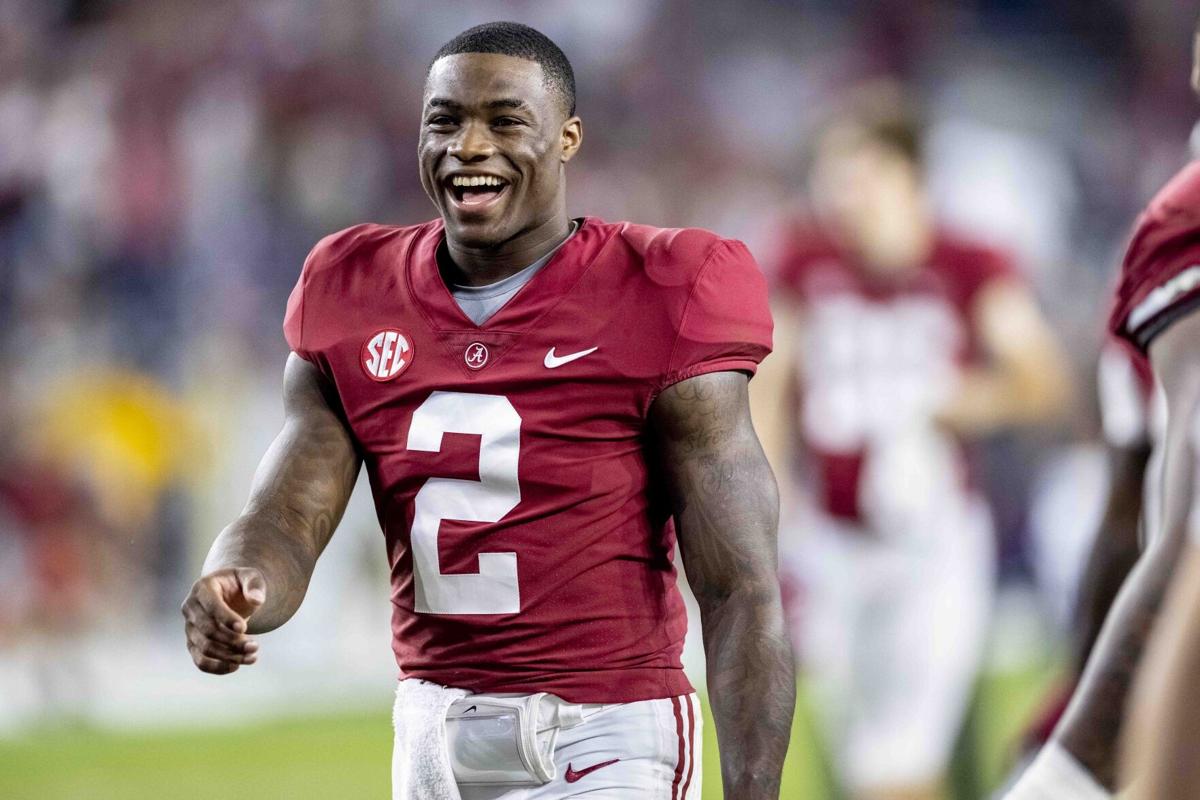
Alabama football’s momentum took a sudden turn after their thrilling Week 5 victory over Georgia. The Crimson Tide surged to the No. 1 ranking in the AP poll, seemingly unfazed by the departure of Nick Saban and adjusting seamlessly under Kalen DeBoer. However, the euphoria was short-lived, as the team has struggled to maintain its dominance since that signature win.
Alabama suffered a shocking upset loss to Vanderbilt in Week 6, one of the season’s biggest surprises, and narrowly avoided a second straight defeat against South Carolina. Playing in Tuscaloosa, the Tide needed a bit of fortune to survive the Gamecocks’ upset bid, which included a poor two-point conversion throw by South Carolina quarterback LaNorris Sellers and a crucial late interception following a successful onside kick.
Despite holding a 5-1 record, Alabama’s recent performances have raised concerns about the team’s consistency and ability to maintain its top ranking. The close calls have exposed some vulnerabilities, suggesting that the Crimson Tide’s path to a playoff spot may be more precarious than it initially appeared.
Offensive line is fine, but not great
Alabama’s offensive line is solid but not as dominant as past iterations, which is a critical factor when evaluating the top contenders in the SEC and the race for the National Championship. The line’s performance metrics, such as ranking 26th in pass blocking and 70th in run blocking per Pro Football Focus (PFF), reveal that there are exploitable weaknesses that elite teams can take advantage of. The run game, a traditional strength for Alabama, has been inconsistent, currently ranking 51st nationally with 179.2 rushing yards per game heading into Week 8.
The issues came to a head in their recent game against South Carolina, where the Crimson Tide managed just 104 rushing yards on 38 carries, averaging a meager 2.7 yards per attempt. When the run game falters, it puts added pressure on the passing game, which struggles to fully compensate unless Alabama can consistently hit downfield throws. While Ryan Williams has emerged as a key target on deep balls, relying on contested catches is not a sustainable strategy for offensive success.
Quarterback Jalen Milroe has shown improvement as a passer, but he’s not yet at the point where he can carry the offense through the air if the ground game isn’t functioning effectively. Alabama needs to find more balance and consistency to reassert itself as a championship-caliber team, especially with tougher defenses looming on the schedule.

Secondary is exploitable
Alabama’s secondary has been the team’s most glaring weakness, with opposing offenses finding success attacking downfield in recent weeks. The Crimson Tide had to rebuild their defensive backfield after losing three key players from last year: safety Caleb Downs, who transferred to Ohio State, and starting cornerbacks Terrion Arnold and Kool-Aid McKinstry, who declared for the NFL Draft.
The new group is young and still finding its footing. Freshman cornerback Zabien Brown and transfer Domani Jackson, who came over from USC, are starting at corner, while safety Keon Sabb, also a transfer, is a redshirt sophomore. Malachi Moore, the lone veteran, has struggled with consistency and made some uncharacteristic mistakes. The lack of cohesion has led to lapses in coverage, as the group hasn’t had much time to build chemistry.
The vulnerabilities became evident in Alabama’s narrow win over Georgia, where the Bulldogs nearly erased a 28-point deficit. Georgia quarterback Carson Beck connected on seven passes of 20 yards or more during the comeback, exposing the secondary’s struggles in defending deep routes. The issues persisted against South Carolina, as receiver Nyck Harbor hauled in a 31-yard touchdown that put the Gamecocks within striking distance in the final minute.
While the secondary has shown its talent with game-sealing interceptions by Brown and Jackson against Georgia and South Carolina, respectively, it remains a work in progress. Alabama’s young defensive backs will continue to be tested by elite offenses, and improving their play will be crucial for the Crimson Tide to remain contenders down the stretch.
Penalties continue to hurt Alabama
Alabama’s struggle with penalties has been a persistent issue, resurfacing as a significant concern this season. The Crimson Tide’s tendency to commit costly mistakes has them ranked near the bottom in penalty frequency, averaging nearly eight penalties per game (119th out of 134 FBS teams). This lack of discipline is one factor holding the team back and has nearly cost them victories, such as in their narrow escape against Georgia, where they were flagged 10 times for 90 yards.
The types of penalties plaguing Alabama are varied and pervasive. The secondary is prone to grabbing and defensive holding, while the offense frequently suffers from procedural infractions like false starts. Additionally, the team has been hurt by undisciplined moments after the whistle, leading to personal fouls that extend opponents’ drives or kill their own momentum.
This recurring problem is undermining the Crimson Tide’s efforts to play clean football, as they have been out-penalized in all six games this season. The trend of accumulating more penalties and penalty yards than their opponents has made each game harder than it needs to be. Addressing this issue will be crucial if Alabama hopes to achieve its goals this season, especially with a tough schedule ahead. The coaching staff will need to instill greater discipline and correct the recurring mistakes that are costing the team valuable field position and scoring opportunities.
Leave a Reply